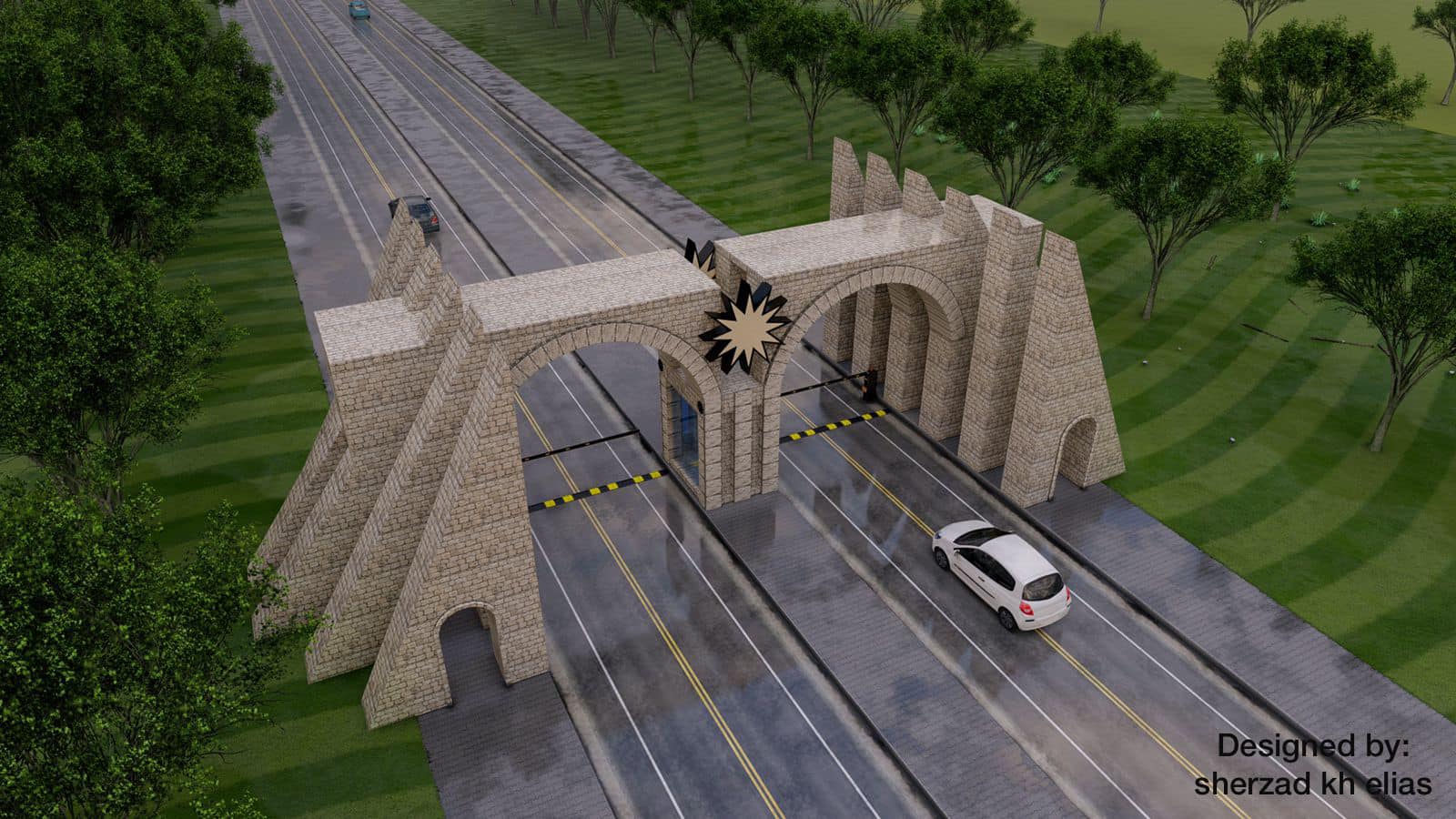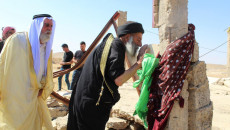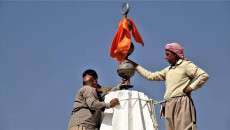A sum of 250 million Iraqi Dinars IQD (USD170,000) was donated to contribute to the reconstruction of the “Lalesh” temple, by the Association of Iraqi Banks and the Central Bank of Iraq within the “Tamkeen” fund project.
Meantime, the Kurdistan Regional Government KRG has decided to allocate 200 million IQD to implement the historic Lalish Gate project.
The admin and technical staff in consultation with the Ezidi council are planning to use natural stones and material in the renovation process to give the historical style and holiness of this place.
Lalish, a temple sacred to the Ezidis (Yazidis), is located in the Sheikhan district of Nineveh Governorate, near Ain Sifni, 60 km northwest of the city of Mosul. The followers, as well as the headquarters of the Spiritual Ezidi Council in Iraq and the world, which is one of the holiest places of worship for the war-torn Ezidi community.
Lalish is the most sacred place for the Ezidis all over the world where mass religious rituals are held.
Ezidis are an ethno-religious minority over half a million population, mostly residing in Shingal and Shekhan in northern Iraqi province of Nineveh. The militants of the extremist group of Islamic State in Iraq and Syria ISIS in 2014 attacked their communities accusing them of being heretics, killing thousands of men and taking thousands of women and children as sex slaves, in an atrocity the U.N. described as genocide.
The Ezidi administration institution is made up of the Ezidi Spiritual Council, prince of Ezidis (Mir) who is the head of the spiritual council (leader of the community), Baba-Shékh(the key religious figure), Minister Sheikh, and head of the seniors. They unanimously form the council and take the decisions.

In December 2020, the Iraqi Ministry of Culture announced the inclusion of the Lalish Temple on the temporary list of The United Nations Educational, Scientific and Cultural Organization "UNESCO" until it is included in the World Heritage List.
Khaled Narmo, one of the engineers supervising the reconstruction of the temple, said that "this amount will be included in the third phase for the reconstruction of the temple, and we are now in the process of initiating special procedures on how to work.
Narmo said the third stage includes building a shrine and special places for worship and receiving visitors. “We as the engineering committee have consulted with the spiritual council and His Highness the Yazidi Amir, and they confirmed commencing the third phase."
A ceremony was held to allocate the 250 million Iraqi dinars, on February 3, 2022, in one of the halls of the temple, in the presence of the Emir (Prince) of the Ezidis in Iraq and the world, Mir Hazim Tahsin Beg, the head of the Ezidi Spiritual Council, the Association of Iraqi Banks and the Central Bank of Iraq CBI, Pishtiwan Sadiq, the KRG Minister of Endowments and representative of the Prime Minister KRG PM, and representatives of religions and ethnicities, government officials and civil society organizations.
The Association of Banks was established on May 5th, 2004, umbrella for 19 private banks operating in Iraq at that time.
"It pleases me that we all meet and that we gather to do good and strengthen the bonds of love among all of us to announce the launch of the project to restore part of the holy Lalish Temple," Mir Hazim Tahsin Beg told ceremony attendants.
Mir reminded the crowd the temple was subjected to destruction, demolition, burning and exhumation of graves by the invaders and occupiers during the genocide campaigns that occurred against the Ezidis over a period of nearly 74 campaigns of extermination, the latest of which is the genocide campaign in Shingal.
The era of the establishment of the Lalish Temple dates back to the third century BC, and is characterized by a rare artistic style in architecture and construction, in which it mixes Seljuk art as well as the ancient oriental associated with the Kurdish heritage in terms of spacious buildings.
The PM of KRG has donated 200 million Iraqi dinars to build a brand entrance gate for Lalish.

Layout of the new design for Lalish Grand Gate.
In the last two years, the KRG has implemented several other projects for the temple including the two-side main street project at a cost of about 800 million IQD, the large water tank project with a water network for 200 million IQD, in addition to building a special factory to extract olive oil manually according to the heritage and traditional methods used in the ancient temple, to produce special oil for lighting the torches of religious rituals.
"We plan to recruit foreign experts to work according to international models, in harmony with the specifications of UNESCO for archaeological sites," Narmo told KirkukNow.
Narmo affirmed that foreign organizations, consulates and Western countries, specifically the United States of America and through the US State Department within the program for the preservation of archaeological areas have played nig role in restoring the temple.
The US has donated one million US dollars, via the University of Pennsylvania, which is one of the reputable universities and has a history in the field of archaeological sites.
The media officer of Lalish Temple, Luqman Suleiman, says that "the ongoing restoration aims to restore the spirit of the building due to the passage of time and what is commensurate with its history and its spiritual and religious value for the Ezidis."
"We seek to return the construction of the temple to what it was 150 years ago," noting that "similar restoration processes have begun in many of the Yazidis' religious shrines."
According to Suleiman, the Ezidi component has about 500 religious shrines, most of which are distributed in the regions of northern Iraq, and many of them have been vandalized and destroyed under ISIS.
Ezidism is an old Middle Eastern monotheistic ethnic religion and is based on belief in one God who created the world and entrusted it into the care of seven Holy Beings, known as Angels. The ouststanding among these angels is Melek Taus who is the leader and has authority over the world.
Most Ezidis speak Kurmanji, one of the two main Kurdish dialects, however, most Ezidis consider Ezidism a religious not ethnic identity.







